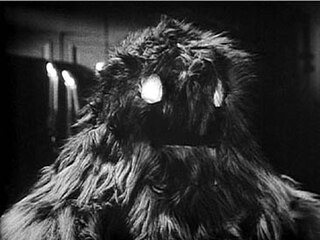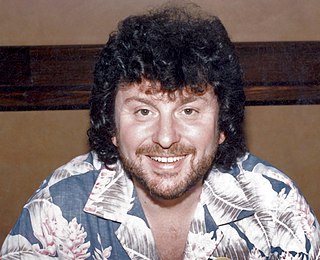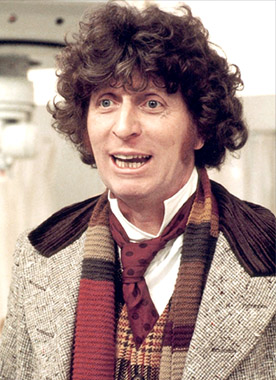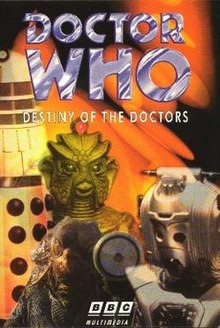
Doctor Who is a British science fiction television series broadcast by the BBC since 1963. The series, created by Sydney Newman, C. E. Webber and Donald Wilson, depicts the adventures of an extraterrestrial being called the Doctor, part of a humanoid species called Time Lords. The Doctor travels in the universe and in time using a time travelling spaceship called the TARDIS, which externally appears as a British police box. While travelling, the Doctor works to save lives and liberate oppressed peoples by combating foes. The Doctor often travels with companions.

The Master, or "Missy " in their female incarnation, is a recurring character in the British science fiction television series Doctor Who and its associated spin-off works. They are a renegade alien Time Lord and the childhood friend and later enemy of the title character, the Doctor. They were most recently portrayed by Sacha Dhawan.

The Three Doctors is the first serial of the tenth season of the British science fiction television series Doctor Who, first broadcast in four weekly parts on BBC1 from 30 December 1972 to 20 January 1973.

The Yeti are fictional robots from the long-running British science fiction television series Doctor Who. They were originally created by Henry Lincoln and Mervyn Haisman, and first appeared in the 1967 serial The Abominable Snowmen, where they encountered the Second Doctor and his companions Jamie and Victoria.
Doctor Who spin-offs refers to material created outside of, but related to, the long-running British science fiction television series Doctor Who.
The Five Doctors is a special feature-length episode of the British science fiction television series Doctor Who, produced in celebration of the programme's 20th anniversary. It had its world premiere in the United States, on the Chicago PBS station WTTW and various other PBS member stations on 23 November 1983, the anniversary date. It was transmitted on BBC1 in the United Kingdom two days later.

The Doctor is the protagonist of the long-running BBC science fiction television series Doctor Who. They are an extraterrestrial Time Lord who travels the universe in a time travelling spaceship, called the TARDIS, often with companions. Since the show's inception in 1963, the character has been portrayed by fourteen lead actors. The transition to each succeeding actor is explained within the show's narrative through the plot device of regeneration, a biological function of Time Lords that allows a change of cellular structure and appearance with recovery following a mortal injury.

John Turner, known professionally as John Nathan-Turner, was an English television producer. He was the ninth producer of the long-running BBC science fiction series Doctor Who and the final producer of the series' first run on television. He finished the role having become the longest-serving Doctor Who producer and cast Peter Davison, Colin Baker and Sylvester McCoy as the Fifth, Sixth and Seventh Doctors, respectively.

The Third Doctor is an incarnation of the Doctor, the protagonist of the British science fiction television series Doctor Who. He was portrayed by actor Jon Pertwee. Within the series' narrative, the Doctor is a centuries-old alien Time Lord from the planet Gallifrey who travels in time and space in the TARDIS, frequently with companions. At the end of life, the Doctor regenerates. Consequently, both the physical appearance and personality of the Doctor changes. Preceded in regeneration by the Second Doctor, he is followed by the Fourth Doctor.
The long-running British science fiction television series Doctor Who has since its beginnings in 1963 generated many hundreds of products related to the show, from toys and games to picture cards and postage stamps. This article is not an exhaustive list of merchandise but attempts to present a flavour of the type of material that has been produced. This entry mainly concentrates on "official" spin-offs, that is to say, material sanctioned by the British Broadcasting Corporation, which produces the series.

The First Doctor is the original incarnation of the Doctor, the protagonist of the British science fiction television series Doctor Who. He was portrayed by actor William Hartnell in the first three series from 1963 to 1966 and the tenth anniversary story The Three Doctors from 1972 to 1973. The character would occasionally appear in the series after Hartnell's death, most prominently as portrayed by Richard Hurndall in the 1983 multi-doctor special The Five Doctors, and as portrayed by David Bradley in the 2017 Twelfth Doctor episodes "The Doctor Falls" and "Twice Upon a Time" and in the 2022 Thirteenth Doctor episode "The Power of the Doctor", the latter previously having portrayed Hartnell himself in the 2013 biopic An Adventure in Space and Time.

The Second Doctor is an incarnation of the Doctor, the protagonist of the British science fiction television series Doctor Who. He was portrayed by actor Patrick Troughton. 53 of his 119 episodes are missing.

The Fourth Doctor is an incarnation of the Doctor, the protagonist of the British science fiction television series Doctor Who. He is portrayed by Tom Baker.

In the long-running British science fiction television series Doctor Who, regeneration is a biological ability exhibited by the Time Lords, a race of fictional humanoids originating on the planet Gallifrey. This process allows a Time Lord to undergo a transformation into a new physical form and a somewhat different personality after instances which would normally result in death. Regeneration has been used multiple times throughout the history of the show as a device for introducing a new actor for the lead role of its main character, the Doctor. Other Time Lords and similar characters have also regenerated, usually for narrative reasons, rather than casting.

Since the first broadcast of the British science-fiction television serial Doctor Who in 1963, there have been a number of exhibitions of props, costumes and sets relating to the show throughout the United Kingdom. Some have been intended to be permanent, and others seasonal; most have been staged at existing tourist locations. None are currently open to the public.

The twentieth season of British science fiction television series Doctor Who began on 3 January 1983 with the story Arc of Infinity, and ended 16 March 1983 with The King's Demons. A 20th Anniversary special, The Five Doctors, followed in November 1983. John Nathan-Turner produced this series, with Eric Saward script editing.

The twelfth season of British science fiction television series Doctor Who began on 28 December 1974 with Tom Baker's first serial Robot, and ended with Revenge of the Cybermen on 10 May 1975.

An Adventure in Space and Time is a 2013 British biographical television film, starring David Bradley, Brian Cox, Jessica Raine and Sacha Dhawan. Directed by Terry McDonough, and written by regular Doctor Who writer Mark Gatiss, it premiered on BBC Two on 21 November 2013, to coincide with the 50th anniversary of the science fiction television series. Further, international broadcasts of the television film were made after its premiere on British television.
















